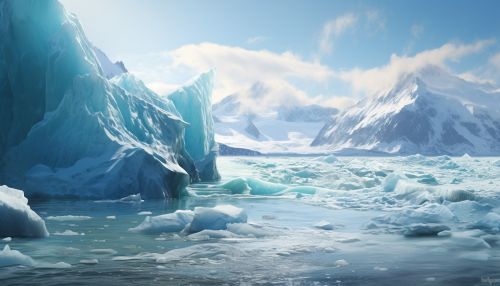Eustatic sea level rise
Introduction
Eustatic sea level rise refers to the global increase in sea level due to the addition of water into the world's oceans. This phenomenon is primarily caused by two factors: the melting of ice on land, such as glaciers and ice sheets, and the thermal expansion of seawater as it warms. Eustatic sea level rise is a critical aspect of climate change, as it can lead to significant impacts on coastal communities and ecosystems.
Causes
Melting of Land Ice
The melting of land ice contributes significantly to eustatic sea level rise. This includes the melting of glaciers and ice sheets, which are vast, continent-sized bodies of ice. When these ice bodies melt, the water flows into the oceans, increasing their volume and causing sea levels to rise.
Thermal Expansion
Thermal expansion is another major cause of eustatic sea level rise. As seawater warms, it expands, increasing its volume. This expansion of seawater contributes to the rise in global sea levels.
Impacts
Eustatic sea level rise can have significant impacts on both human societies and natural ecosystems. These impacts can include increased coastal flooding, erosion of beaches, and the inundation of low-lying areas.
Coastal Flooding
One of the most immediate and visible impacts of eustatic sea level rise is an increase in coastal flooding. As sea levels rise, the frequency and severity of coastal flooding events can increase.
Beach Erosion
Eustatic sea level rise can also lead to increased beach erosion. As sea levels rise, waves can reach further inland, eroding beaches and threatening coastal structures.
Inundation of Low-Lying Areas
Low-lying coastal areas are particularly vulnerable to eustatic sea level rise. As sea levels rise, these areas can become permanently inundated, leading to the displacement of human populations and the loss of coastal ecosystems.
Mitigation and Adaptation
Addressing eustatic sea level rise requires both mitigation and adaptation strategies. Mitigation involves reducing the causes of sea level rise, primarily through the reduction of greenhouse gas emissions. Adaptation involves adjusting to the changes brought about by sea level rise, such as through the construction of sea walls or the relocation of vulnerable communities.
See Also
- Climate change adaptation
- Effects of climate change on island nations
- Sea level rise and coastal cities


